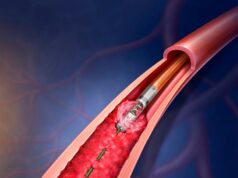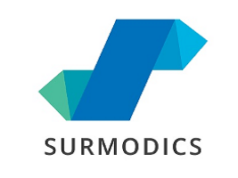 Data from the PREVEIL early feasibility study of the SurVeil drug-coated balloon (DCB, Surmodics) were shared in a late-breaking clinical trial presentation at the Vascular Interventional Advances conference (VIVA; 5–8 November, Las Vegas, USA). PREVEIL is a prospective, US, multicentre, single-arm trial designed to assess the safety and feasibility of the SurVeil DCB in the treatment of patients with symptomatic peripheral arterial disease (PAD) due to de novo lesions of the femoral and popliteal arteries.
Data from the PREVEIL early feasibility study of the SurVeil drug-coated balloon (DCB, Surmodics) were shared in a late-breaking clinical trial presentation at the Vascular Interventional Advances conference (VIVA; 5–8 November, Las Vegas, USA). PREVEIL is a prospective, US, multicentre, single-arm trial designed to assess the safety and feasibility of the SurVeil DCB in the treatment of patients with symptomatic peripheral arterial disease (PAD) due to de novo lesions of the femoral and popliteal arteries.
Twelve-month data from the study show that acute success measures of safety were achieved in 100% of patients. No patients required re-intervention of either the target lesion or the target vessel at 12 months (100% freedom from clinically driven target lesion revascularisation and target vessel revascularisation (CD-TLR or CD-TVR)). The results also demonstrate continued significant improvement in Rutherford classification, resting ankle brachial index (ABI), and walking impairment questionnaire (WIQ) including walking distance, walking speed and stair-climbing scores at 12 months.
As was presented with the six-month results, median paclitaxel plasma concentration peaked immediately post-procedure (Cmax 1.07ng/mL) and was undetectable at 30 days. Secondary technical, device, and procedure success criteria were achieved. The SurVeil DCB is not yet approved for sale in the USA.
“The ongoing positive results from this study demonstrate that the SurVeil DCB has the potential to be a next-generation DCB with improved efficacy of drug transfer,” said Kenneth Rosenfield, section head, Vascular Medicine and Intervention at Massachusetts General Hospital, and US co-principal investigator for the TRANSCEND trial. “These 12-month data continue to support the functionality and safety of the device.”
Data presented include 12-month results from 13 patients (Rutherford class 2 to 4) at three clinical sites who were treated with the SurVeil DCB. Average lesion length was 56mm. Clinical assessments for the study include primary patency and late lumen loss through six months, plasma paclitaxel levels, and changes in Rutherford classification, ABI/TBI, six-minute walk test, and WIQ at one, six, 12, 24 and 36 months. Key secondary safety endpoints included freedom from major vascular complications, evidence of paclitaxel toxicity, or thrombolysis in myocardial infarction (TIMI).
In July 2017, Surmodics received an investigational device exemption (IDE) from the US Food and Drug Administration (FDA) to initiate a pivotal clinical trial of the SurVeil DCB, and the first patient was enrolled in October 2017. The randomised trial, TRANSCEND, is designed to evaluate the SurVeil DCB for treatment for PAD in the upper leg compared to the Medtronic IN.PACT Admiral DCB.













